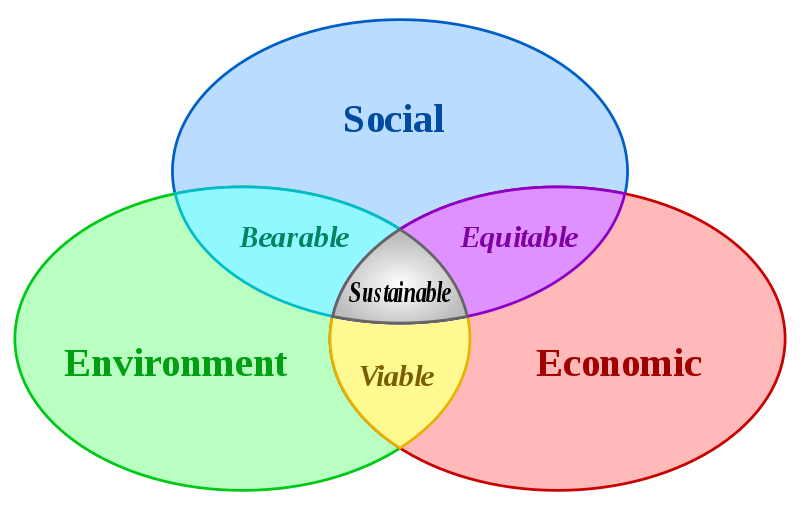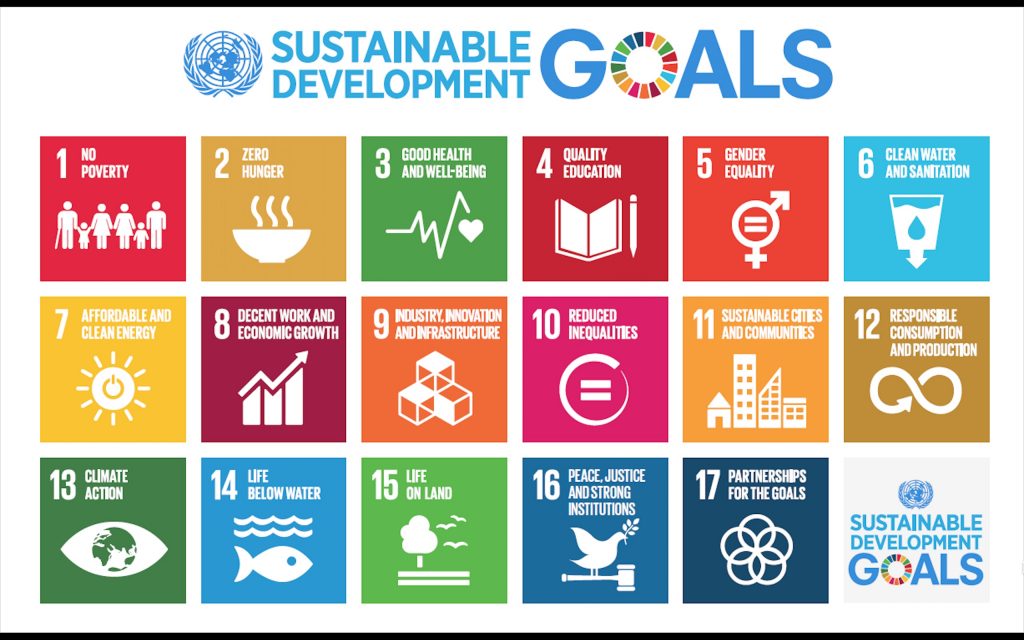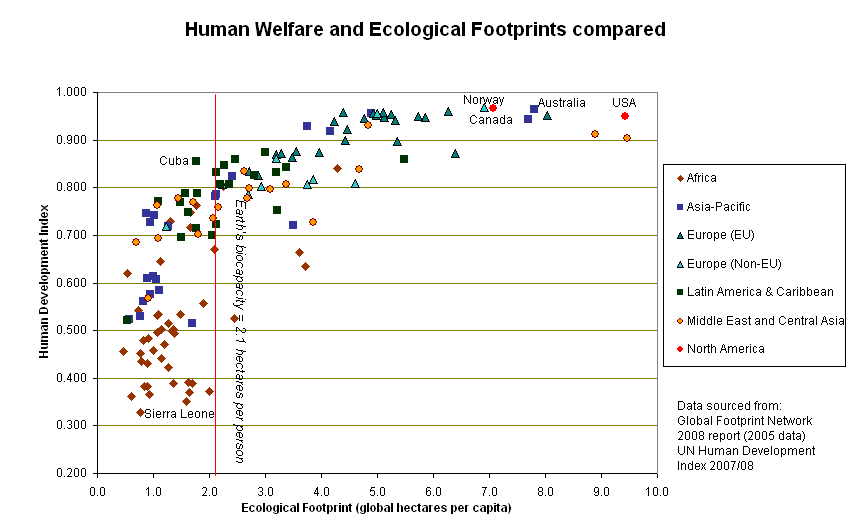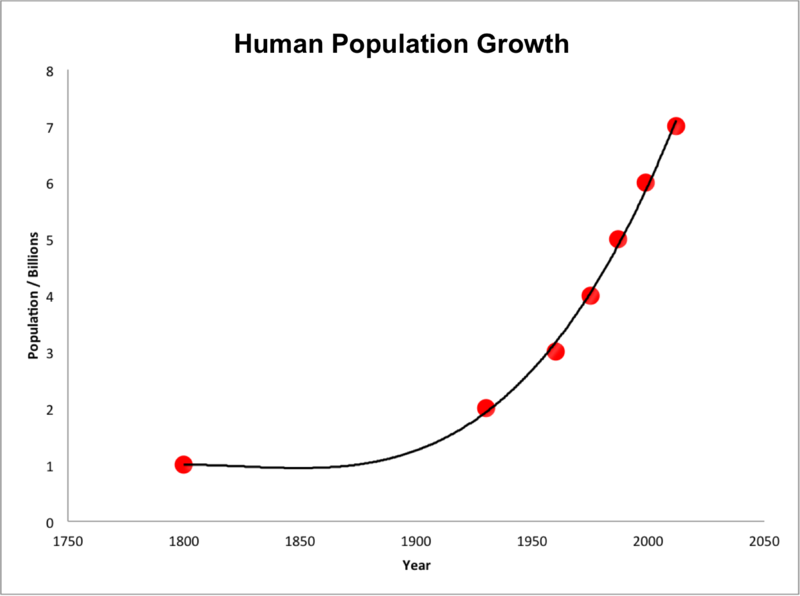2 Environmental Science and Sustainability
Learning Objectives
After studying this chapter, you should be able to:
- Differentiate between environmental science, ecology, and environmentalism
- Explain why it is important to study environmental science
- Explain the concept of sustainability and its social, political, and cultural challenges
- Give examples of ecosystem services, renewable resources, nonrenewable resources, and perpetual resources
- Differentiate between the environmental impacts of developed and developing countries
- Describe four of the main causes of environmental problems
What is Environmental Science?
The environment, according to Albert Einstein, is “anything that isn’t me.” In other words, the environment is all the living and nonliving things on the earth. Humans depend on and interact with the environment in many ways, and scientists are interested in learning how these interactions work. Humans also impact the environment in many ways, both positive and negative. The field of environmental science has grown out of the desire to more fully understand our environment and minimize the damage we’re causing to it.
Environmental science is the interdisciplinary study of the interaction of living and non-living parts of the environment, with a special focus on the impact of humans on the environment. The study of environmental science includes biology, geology, climate science, and many other fields. It may even incorporate the economic, political, and social factors that drive human impacts on the planet.
One important component of environmental science is ecology, a biological science that studies how living things interact with one another and with their environment. Ecology has traditionally had a more narrow focus and is less interdisciplinary than environmental science.
Ecology and environmental science are sometimes confused with environmentalism, which is a social and political movement aimed at protecting environmental quality (Figure 1). Environmentalism is not a science itself, but the goals and actions of environmentalists may be based on the concepts studied by environmental scientists.

Knowledge Check
Why Study Environmental Science?
The need for equitable, ethical, and sustainable use of Earth’s resources by a global population that continues to grow requires us not only to understand how human behaviors affect the environment, but also the scientific principles that govern interactions between the living and non-living. Our future depends on our ability to understand and evaluate evidence-based arguments about the environmental consequences of human actions and technologies, and to make informed decisions based on those arguments.
From global climate change to habitat loss driven by human population growth and development, Earth is becoming a different planet—right before our eyes. The global scale and rate of environmental change are beyond anything in recorded human history. Our challenge is to acquire an improved understanding of Earth’s complex environmental systems; systems characterized by interactions within and among their natural and human components that link local to global and short-term to long-term phenomena, and individual behavior to collective action. The complexity of environmental challenges demands that we all participate in finding and implementing solutions leading to long-term environmental sustainability.
Introduction to Sustainability
This section introduces the concept of sustainability, which refers to the social, political, scientific, and cultural challenges of living within the means of the earth without significantly impairing its function.
Our Common Future (1987), the report of the World Commission on Environment and Development, is widely credited with having popularized the concept of sustainable development. It defines sustainable development as development that meets the needs of the present without compromising the ability of future generations to meet their own needs.
The concept of sustainability, however, can be traced back much further to the oral histories of indigenous cultures. For example, the principle of inter-generational equity is captured in the Inuit saying, “we do not inherit the Earth from our parents, we borrow it from our children.” The Native American “Law of the Seventh Generation” is another illustration. According to this, before any major action was to be undertaken, its potential consequences on the seventh generation had to be considered. For a species that at present is only 6,000 generations old and whose current political decision-makers operate on time scales of months or few years at most, the thought that other human cultures have based their decision-making systems on time scales of many decades seems wise but unfortunately inconceivable in the current political climate.
Sustainability is often considered to have three “pillars”: social, environmental, and economic (Figure 2). All three of these factors must be in balance to have a truly sustainable society, as shown in the image below. For example, a society in which all people have their social and economic needs met would be considered equitable, but it may not have a healthy environment. Likewise, a clean, economically prosperous society is not truly sustainable unless its citizens experience social equality and freedom.

United Nations Sustainable Development Goals
In 2015, the United Nations adopted a list of 17 goals for the world to achieve by the year 2030 if we wish to achieve true sustainability on our planet (Figure 3). Each goal has an associated set of measurable targets that allow the tracking of progress towards meeting the goal. For example, the goal of “No Poverty” includes a target of ending extreme poverty around the world by 2030. Extreme poverty, defined as an income of less than $1.90 per day, has been cut in half since 1990, but still more than 1 in 10 people live below the extreme poverty line. Details about each goal and its associated targets can be found at the United Nations website.
The UN Sustainable Development Goals were developed with the three pillars of sustainability in mind. Goals related to the social pillar include Quality Education and Gender Equality. Economic goals include No Poverty, Decent Work and Economic Growth, and Reduced Inequalities. Environmental goals include Affordable and Clean Energy, Climate Action, and Life on Land.

Natural Capital = Natural Resources + Ecosystem Services
One of the main goals sustainability is to maintain the Earth’s natural capital, which is made up of the natural resources and ecosystem services that sustain all life on the planet. Natural resources are any materials in nature that satisfy a human need. Ecosystem services, also known as natural services, are processes in nature that support life and human economies. They include processes such as water purification, waste recycling, and even recreational and spiritual benefits.
Ecosystem services are processes or actions, but natural resources are physical materials. They can be classified based on whether they can be used up by humans and how quickly they can be replenished by nature. Energy from the sun is an example of a perpetual resource because it will exist for billions of years and will never be depleted. Nonrenewable resources, such as iron, coal, and oil, are finite and cannot be replenished on normal human time scales. Renewable resources—such as water, soil, and plants—can be replenished over time. However, unlike perpetual resources, renewable resources can become nonrenewable if they are used up faster than nature can replenish them. For example, the trees in a forest are only renewable if they are replanted after being cut down (Figure 4).

Knowledge Check
Measuring Our Environmental Impact
IPAT Equation
One way to measure human impact on the environment is through the use of the IPAT model, developed by scientists Paul Ehrlich and John Holdren in the 1970s. This model shows how the environmental impact (I) of human activities depends on population size (P), affluence (A), and level of technology (T). Affluence generally means wealth, but in this case it specifically refers to the amount of resources consumed by individuals. The model can be summarized using the equation I = P x A x T:
Impact (I) = Population (P) x Affluence (A) x Technology (T)
Some technologies, such as coal-burning power plants, have negative environmental effects, while other technologies, such as wind farms, have mostly positive effects. The importance of each of the three factors in the equation varies depending on the level of development of a country. A developed country is one that has advanced technology and a high average income per person. These include countries such as the United States, Canada, and Australia. A developing country has a less developed industrial base and lower income per person. A majority of the world’s countries are developing, including most of South America, Africa, and Asia. The environmental impact of a developing country like India, with more than 1 billion residents, is more influenced by population than by the other two factors in the IPAT equation. The impact of Canada, on the other hand, with only 36 million residents, comes mostly from high resource consumption (affluence) and harmful industrial technology.
Ecological Footprint
The ecological footprint (EF) concept, developed by Canadian ecologist and planner William Rees, is an accounting tool that estimates the amount of land and water needed to provide resources and absorb waste for a person or group of people. It starts from the assumption that every category of energy and material consumption and waste discharge requires the productive or absorptive capacity of an area of land or water. If we add up all the land requirements for all categories of consumption and waste discharge by a defined population, the total area represents the total ecological footprint of that population. Dividing by the number of people in the population gives us the per capita ecological footprint. The ecological footprint is usually measured in global hectares (gha); one hectare is about 2.5 acres, or roughly the size of a baseball field.
What does the ecological footprint tell us? Ecological footprint analysis can tell us in a vivid, ready-to-grasp manner how much of the Earth’s environmental functions are needed to support human activities. It also makes visible the extent to which consumer lifestyles and behaviors are ecologically sustainable. The ecological footprint of the average American is – conservatively – 5.1 global hectares per capita of productive land. With roughly 7.4 billion hectares of the planet’s total surface area of 51 billion hectares available for human consumption, if the current global population were to adopt American consumer lifestyles we would need at least two additional planets to produce the resources, absorb the wastes, and provide general life-support functions for everyone.
Since affluence and technology directly influence a country’s environmental impact, it stands to reason that developed nations have a higher per capita ecological footprint than developing nations (Figure 5). As China, India, and other less developed countries undergo rapid industrialization, their ecological footprints will increase along with their levels of wealth and technology.

Knowledge Check
Causes of Environmental Problems
A glance at any recent news source will reveal a whole host of environmental problems, large and small, that we will need to solve if humans are to continue thriving on this planet: ocean pollution, species extinction, climate change, just to name a few. Each of these problems is due to its own unique immediate causes. For example, climate change is being driven by an increase in fossil fuel use and drastic land use changes. But dig a bit deeper and you will find that they can all be traced to a handful of more fundamental causes that ultimately will need to be addressed.
Environmental scientists have identified several major underlying causes of most environmental problems. In this section we will explore four of these causes: unsustainable resource use, negative externalities, economic inequality, and unsustainable population growth. Each of these causes will be addressed in depth later in the course, but this section will provide a brief introduction to each of them.
Unsustainable Resource Use
Unsustainable resource use refers to the fact that most of the earth’s resources are finite, and we are using them too quickly. Ecologists illustrate this point by calculating the Earth Overshoot Day for each year. This is the day on which human resource consumption exceeds the ability of the earth to regenerate those resources. For the remaining days of the year, humans are “borrowing” resources from the coming year. Earth Overshoot Day was on August 1 in 2018, which is a full two months earlier than 2000’s Earth Overshoot Day of November 1.
Negative Externalities
A negative externality occurs whenever the cost paid for a good or service does not account for the harms caused by the production of the good or service. When negative externalities occur, the people who purchase the goods or services benefit from a lower price, while other people and/or the environment pay the “cost” for the harms incurred.
For example, the price you pay for a gallon of gasoline includes the cost of drilling crude oil, processing the oil into gasoline, transporting the gas, paying the wages of all the workers involved, and so on. However, burning the gasoline then releases harmful pollutants into the air that are responsible for climate change and human health problems. The economic, environmental, and social costs caused by gasoline use are paid by society as a whole, rather than by the person filling up her tank at the local gas station. These costs are considered “external” to the price paid at the pump. If the external costs were included in the price, gasoline would be much more expensive, leading to fewer people driving and therefore fewer health and environmental problems (Figure 6).

Of course, raising the price of gasoline would also have unintended negative consequences, such as making it more difficult for low-income people to afford the gas needed to drive to work. This problem is known as a trade-off. Trade-offs occur whenever something of value is lost or decreased in return for an increase in something else of value. The solutions to many environmental problems involve trade-offs. Another example of a trade-off has occurred with the rapid increase of wind energy farms around the world. The turbines that generate this renewable energy have obvious environmental benefits, but they are also responsible for the deaths of thousands of birds who fly into the spinning turbine blades. We as a society need to decide whether the loss of birds is worth the benefit of using a clean, non-polluting, cheap energy source like wind power.
Economic Inequality
A third cause of environmental problems is economic inequality, or the gap between the wealthiest people and the poorest people in a society. Two types of economic inequality are income inequality, or the differences in income levels among the members of a society, and wealth inequality, or the differences in the amount of money and material goods owned by the members of a society. Worldwide, economic inequality has decreased since the 1800s as developing countries have become wealthier. However, there is still a large gap between the world’s richest countries and the world’s poorest. For example, the median income in the United States was about $56,000 per person in 2015, while the median income in Ethiopia was about $783 per person. There is also a considerable wealth gap within many countries, including the United States, where the richest 1% of Americans own more wealth than the bottom 90%.
Economic inequality leads to both extreme affluence and extreme poverty, and both situations can have negative as well as positive impacts on the environment. As people become wealthier, they tend to consume goods at a faster rate and unnecessarily waste resources. This can have dramatic negative effects. For example, the United States has only one-fourth the population of India, but on average Americans consume about 30 times the resources of an Indian citizen. This is why Americans and residents of other wealthy nations have a much larger ecological footprint per person than residents of developing nations (Figure 7).

However, increasing wealth can also lead to positive environmental outcomes. People in developed nations tend to be better educated, which can lead people to be more mindful of their environmental impacts. Greater wealth also allows for more money to develop environmentally friendly technologies and reduce pollution. Consequently, wealthier people can expect to live longer and be exposed to less pollution than people in poor regions.
Poverty is associated with a number of harmful environmental and health effects. Lack of clean water and adequate food lead to around 50,000 premature deaths per day around the world. People in poverty often do not have the luxury of considering the long-term environmental consequences of their actions. This can lead to environmental degradation and local resource depletion as people are forced to focus on providing for their immediate needs at the expense of the natural environment (Figure 8).

On the other hand, people in poverty have no choice but to consume fewer resources overall, leading to a smaller ecological footprint per person. One of the great challenges facing humanity is finding ways to promote the development of the world’s poorest countries while helping them avoid the negative consequences of affluence experienced in the developed world.
Unsustainable Population Growth
In 1850 there were about one billion (1,000,000,000) people on the planet. This number had doubled by 1930, doubled again to four billion by 1975, and finally doubled once more to eight billion in late 2023 (Figure 9). Although the population is still growing, the rate of growth is slowing, and the population is expected to stabilize sometime after the year 2050. Reducing poverty, promoting family planning, and increasing opportunities for women are helping to slow population growth.

No one knows exactly how many people can be sustainably supported by the earth’s finite resources, but it would be impossible to support a growing population forever. The number of humans the earth can support largely depends on the ecological footprints of the individuals and countries in the world. For example, if everyone consumed as much as the average American does today, the earth could support only about 1.3 billion people, much less than the 7 billion who currently inhabit our planet. Creating a sustainable future must address not only population growth but also the unsustainable increase in ecological footprints seen around the world.
Looking back at the IPAT equation, if we want to minimize our impact on the environment, humans will need to learn how to keep the population at a sustainable level while also reining in over-consumption of resources and developing technologies that minimally degrade the natural capital upon which we depend.
Knowledge Check
Attribution
Essentials of Environmental Science by Kamala Doršner is licensed under CC BY 4.0. Modified from the original by Matthew R. Fisher and Sean Whitcomb.
Media Attributions
- NoDAPL-Drums-JohnDuffy © John Duffy is licensed under a CC BY (Attribution) license
- Sustainability_pillars © Johann Dréo is licensed under a CC BY (Attribution) license
- Sustainable_Development_Goals © United Nations is licensed under a Public Domain license
- Amazon_deforestation_2010214 © NASA is licensed under a Public Domain license
- Human_welfare_and_ecological_footprint © Travelplanner is licensed under a CC BY-SA (Attribution ShareAlike) license
- Diesel truck exhaust © U.S. Environmental Protection Agency is licensed under a Public Domain license
- private-jet © Roderick Eime is licensed under a CC BY-ND (Attribution NoDerivatives) license
- Manila_shanty © Mike Gonzalez is licensed under a CC BY-SA (Attribution ShareAlike) license
- Human_population_growth_from_1800_to_2000 © Clevercapybara is licensed under a CC BY (Attribution) license

